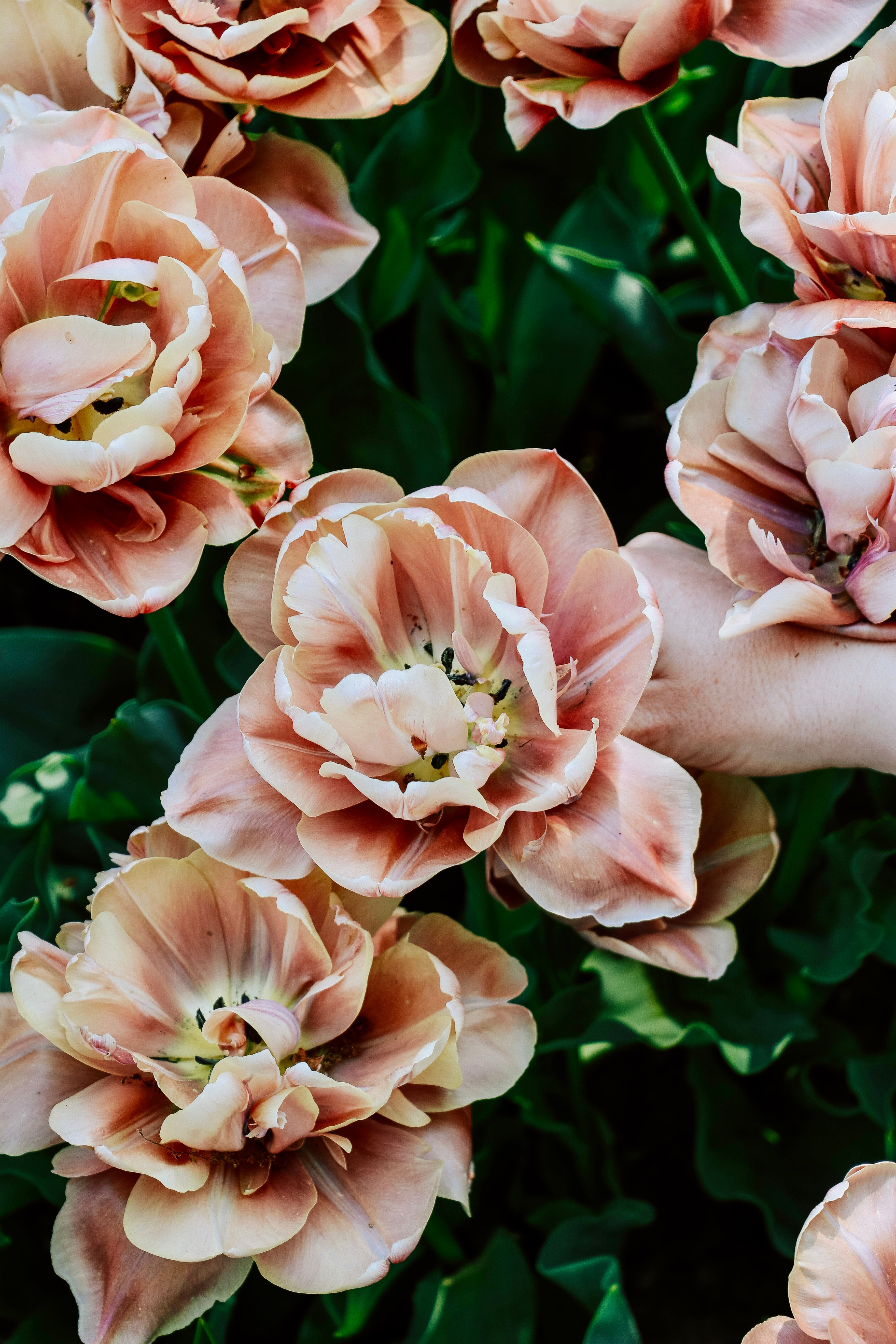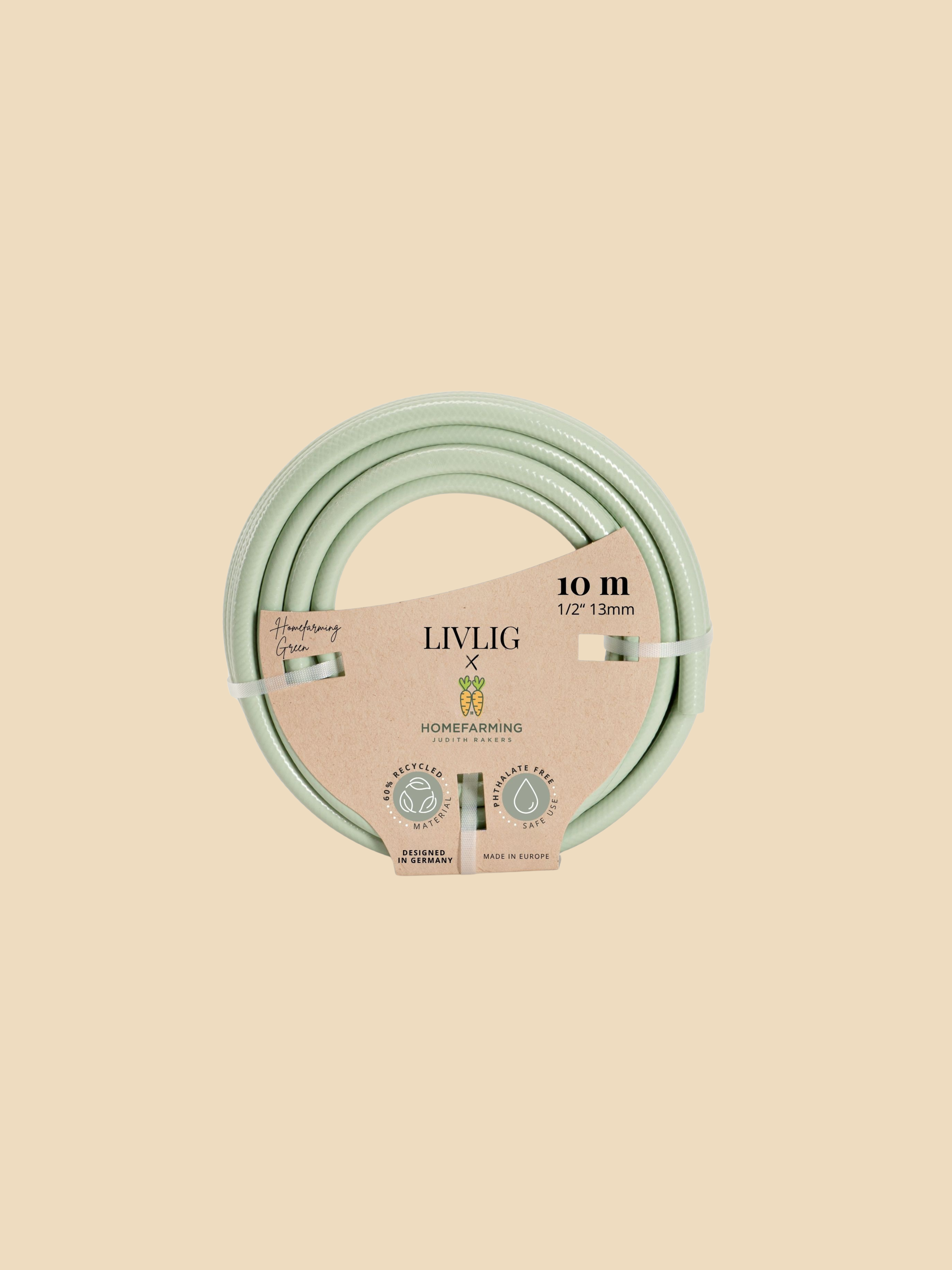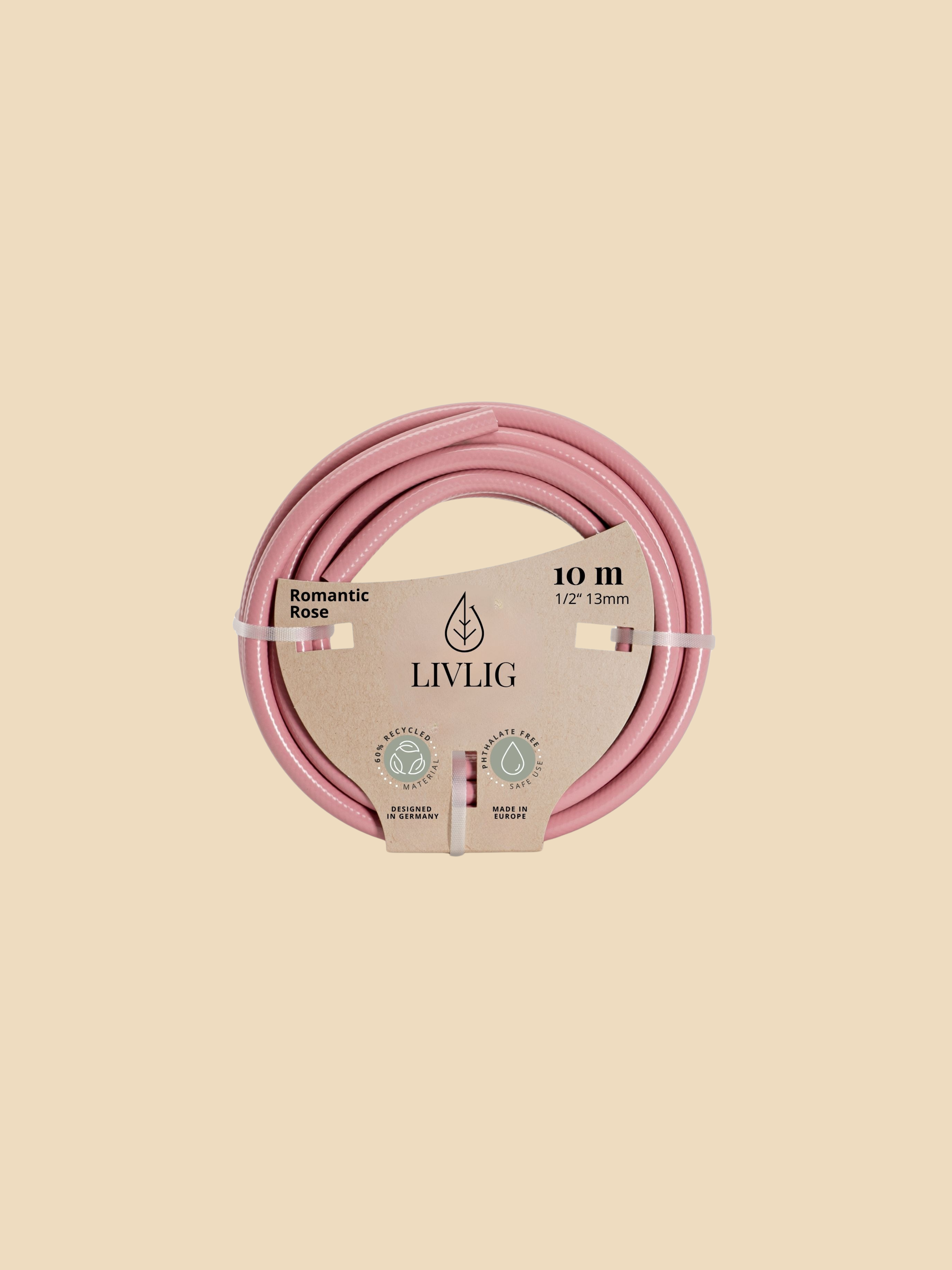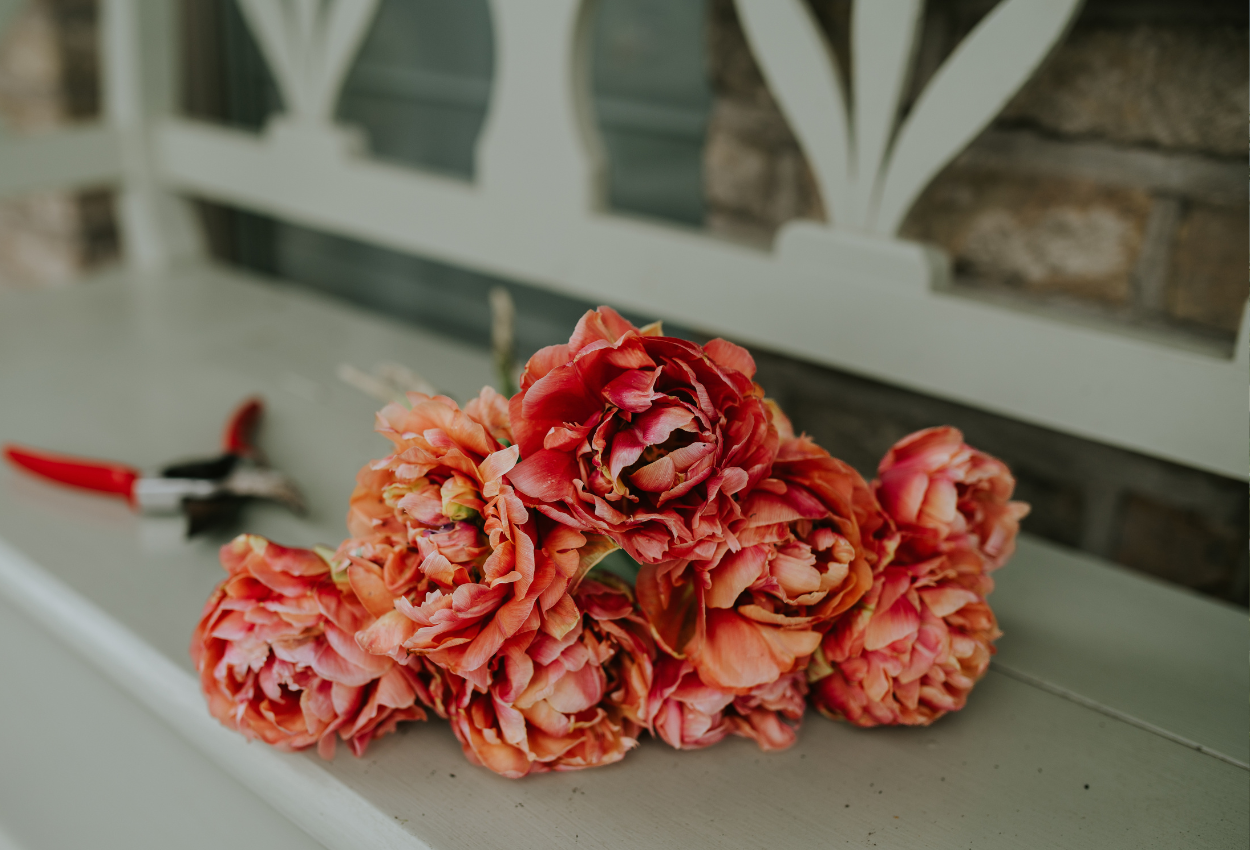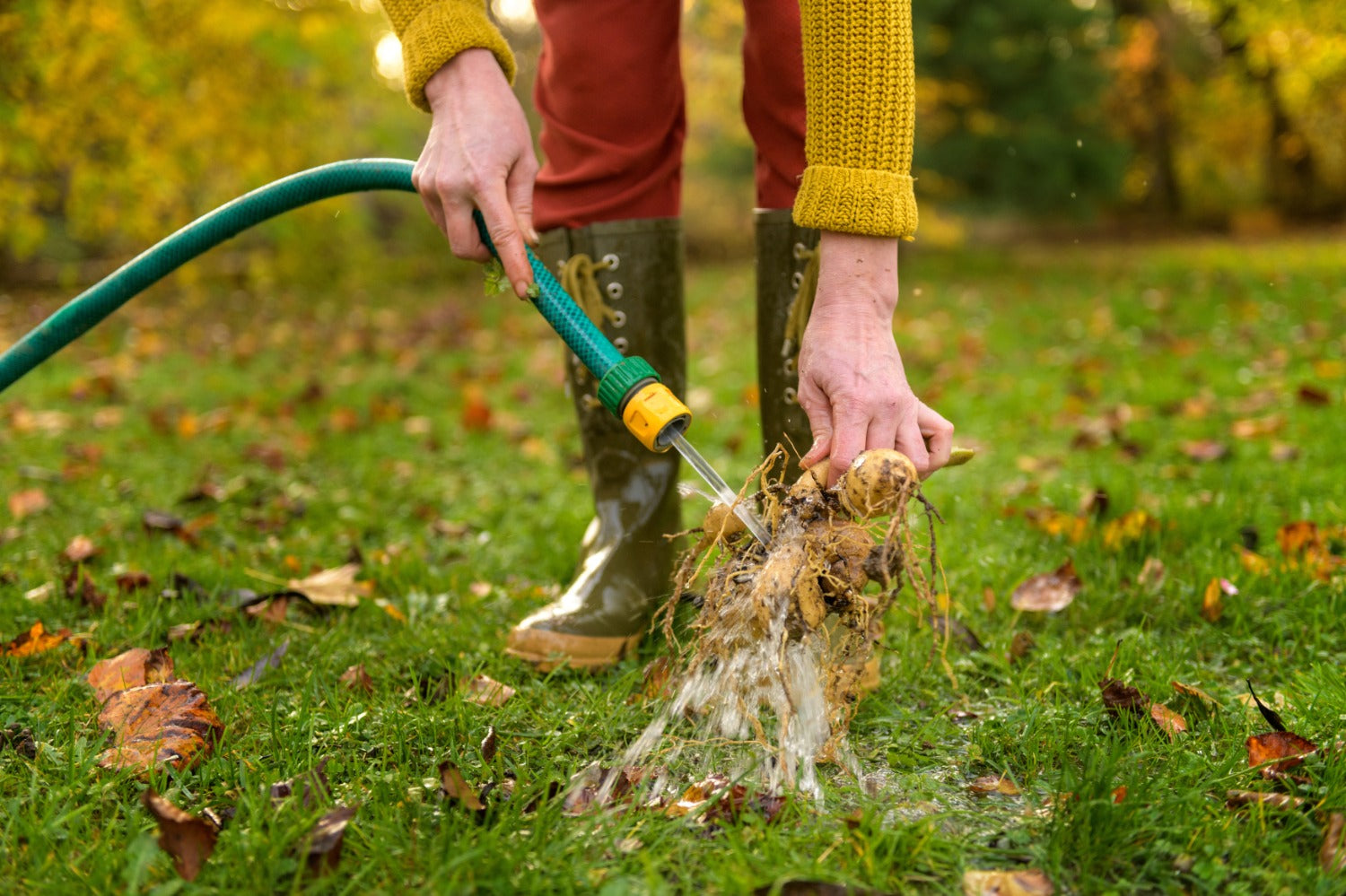Dahlias are the quintessential autumn bloomers, but unfortunately, they completely disappear after the first frost arrives. They become mushy, turn brown, and lose all their form and beauty. It's high time to prepare them for the winter months, so you can enjoy the floral splendor that the beautiful dahlias bring to the garden again next season.
Dig up or leave in the ground?
Whether you can let dahlias overwinter in the ground will mainly depend on the soil type you have. Do you have airy, well-draining sandy soil? Then, with some precautions, you can potentially let the dahlias overwinter in the garden. Very wet soil, like peat or clay soil, is more challenging. Due to the higher water content in the soil, your dahlias are at greater risk of rotting. Tubers planted in heavy soil types are best dug up during the winter months.


Letting dahlias overwinter in the ground
If you have well-draining soil, like sandy soil, you can potentially let the tubers overwinter in the ground. Cut the plants back to about 10 centimeters above the ground right after the first frost, so the stems can dry nicely. An additional advantage is that, especially in spring, you can quickly see where each tuber is located due to the visible stems. However, the work is not done yet: ensure a warm blanket or mulch layer in the garden. Covering the ground provides an extra insulating layer that will protect the tubers from frost or heavy rain.
- Wood chips can easily be made yourself with a shredder or can be bought ready-made.
- Straw is a good and inexpensive mulching material, but it can sometimes contain unwanted seeds. So make sure to use clean straw.
- Compost provides a protective layer on one hand, but on the other, it also adds organic material to the soil. In the long term, compost also improves soil structure, which can only benefit dahlias.
- Finally, you can also use leaves and small plant debris. Shred them or make them smaller by, for example, running over the leaves with a lawnmower.
Learn more through our videos
Did you know we also have a well-stocked YouTube channel? With over 450 videos, we have a vast database of information. Be sure to check out YouTube and subscribe to stay updated with the latest videos.
In this video, Angelo teaches you how to harvest dahlia tubers. He explains the ideal timing, the tools you'll need, and what to watch out for.
Digging up dahlias
Do you have heavy or wet soil, like clay soil? Then it's best to dig up the dahlias. This way, you have more control over the storage process in the winter and are less dependent on the weather gods during the winter months.
Cut the dahlia stems to about 10 centimeters above the ground. You can do this after the first frost, but a few weeks earlier is also possible. You can dig up the dahlias earlier to spread the work or because the dahlia has already given its best. If you notice the tuber is blooming less or simply starting to decline, you can confidently prune the stems shorter.
Carefully dig up the tubers with a fork. A shovel or spade also works, but there's a higher risk of damaging the tuber. Dig generously around the tuber to ensure no damage is done.
Is the tuber very dirty, and you can't see well if the dahlia is truly healthy? Rinse the tuber clean with water and let it dry upside down for a few days in a cool, dark place. A greenhouse, garage, or cool utility room is ideal for this.
Once the dahlias are dry, they can be stored. Wrap the tubers in newspaper or store them in wood shavings. A cardboard box with holes or a wooden crate is perfect. Keep the dahlias in a dry and frost-free place during the winter months.
Don't forget to label the dahlias with the correct name. You can do this by writing the variety on the tuber with a waterproof marker or by attaching a water-resistant label.
Check the tubers occasionally. Do you notice tubers with rotten spots or mold? Remove them as soon as possible to prevent contamination of other tubers.
Can dahlias be sick?
Plants can get sick, but dahlia tubers can also be susceptible to fungi and bacteria. For instance, gall is a contagious bacterium that causes rampant growths on the plant. You can recognize gall by cauliflower-like parts on the tuber or many young shoots growing close together. If you notice a tuber with gall when digging, it's important to remove it as soon as possible. Do not throw them on the compost heap and disinfect your garden tools/hands to prevent further contamination.

Splitting dahlias: now or in the spring?
There is no right or wrong when it comes to the timing of splitting dahlias. Some swear by doing it when digging them up, while others prefer to split the tubers in the spring.
If you're unsure, we recommend splitting tubers in the spring. At that time, the tubers are slightly more dried out, and the eyes of the tuber are more visible. This way, you can quickly and easily spot where to split the dahlia tubers.


